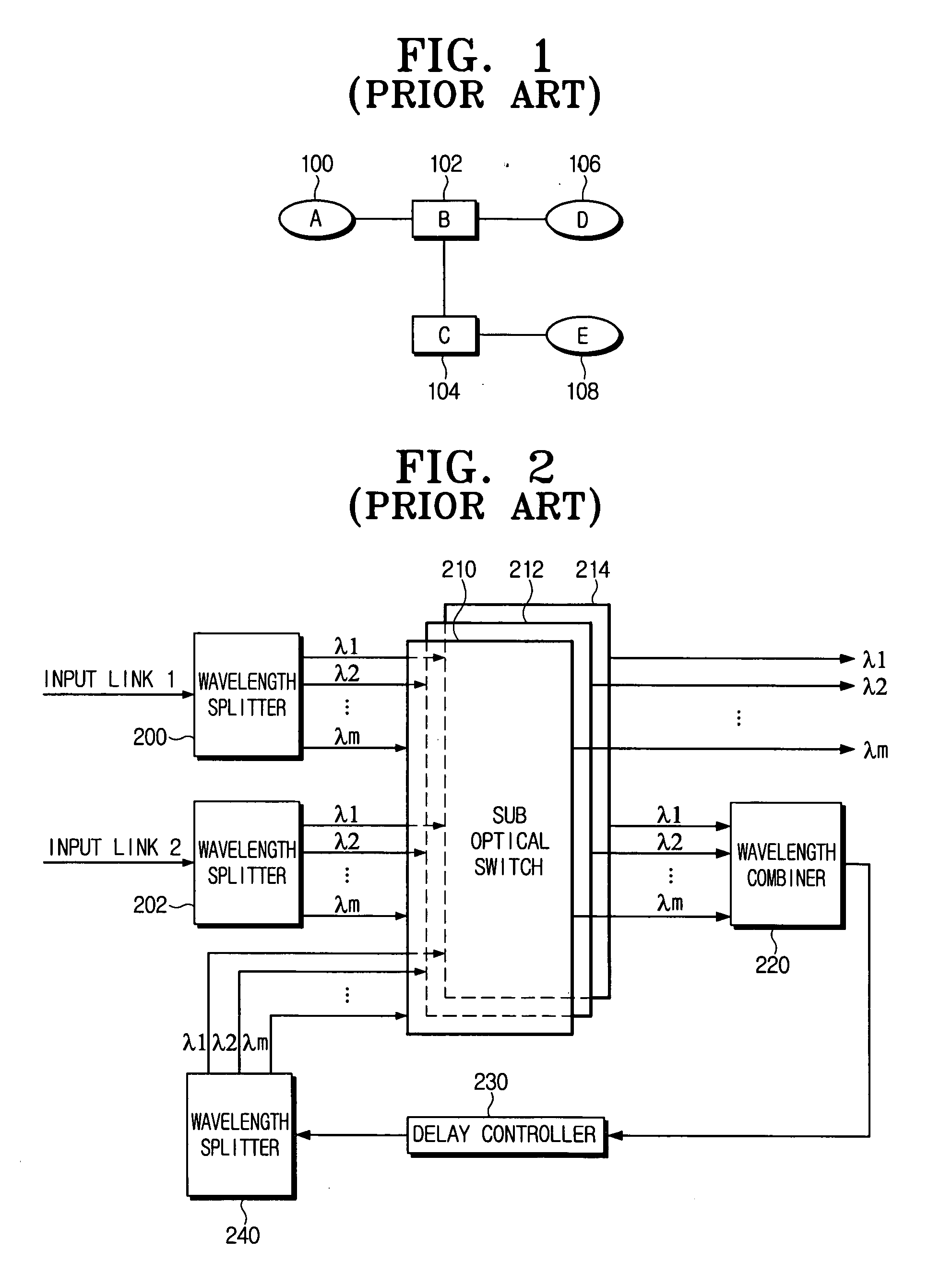Channel assignment method for optical burst switching (OBS) network
a technology of optical burst switching and channel assignment, applied in data switching networks, auxiliary members of forms/shuttering/falseworks, digital transmission, etc., can solve problems such as increasing network costs, and achieve the effect of efficient transfer of burst data
- Summary
- Abstract
- Description
- Claims
- Application Information
AI Technical Summary
Benefits of technology
Problems solved by technology
Method used
Image
Examples
Embodiment Construction
[0041] Exemplary embodiments of the present invention will now be described in greater detail with reference to the accompanying drawings.
[0042] In the following description, same drawing reference numerals are used for the same elements even in different drawings. The matters defined in the description, such as detailed construction and element descriptions, are provided to assist in a comprehensive understanding of the invention. Also, well-known functions or constructions are not described in detail since they would obscure the invention in unnecessary detail.
[0043] Hereinbelow, a method for efficiently transferring burst data (BD) incoming through input links to an output link according to an exemplary embodiment of the present invention is elucidated in reference to the attached drawings.
[0044]FIGS. 5A and 5B illustrate how to transfer BDs incoming through input links to an output link according to an exemplary embodiment of the present invention. In FIGS. 5A and 5B, a node ...
PUM
 Login to View More
Login to View More Abstract
Description
Claims
Application Information
 Login to View More
Login to View More - R&D
- Intellectual Property
- Life Sciences
- Materials
- Tech Scout
- Unparalleled Data Quality
- Higher Quality Content
- 60% Fewer Hallucinations
Browse by: Latest US Patents, China's latest patents, Technical Efficacy Thesaurus, Application Domain, Technology Topic, Popular Technical Reports.
© 2025 PatSnap. All rights reserved.Legal|Privacy policy|Modern Slavery Act Transparency Statement|Sitemap|About US| Contact US: help@patsnap.com



